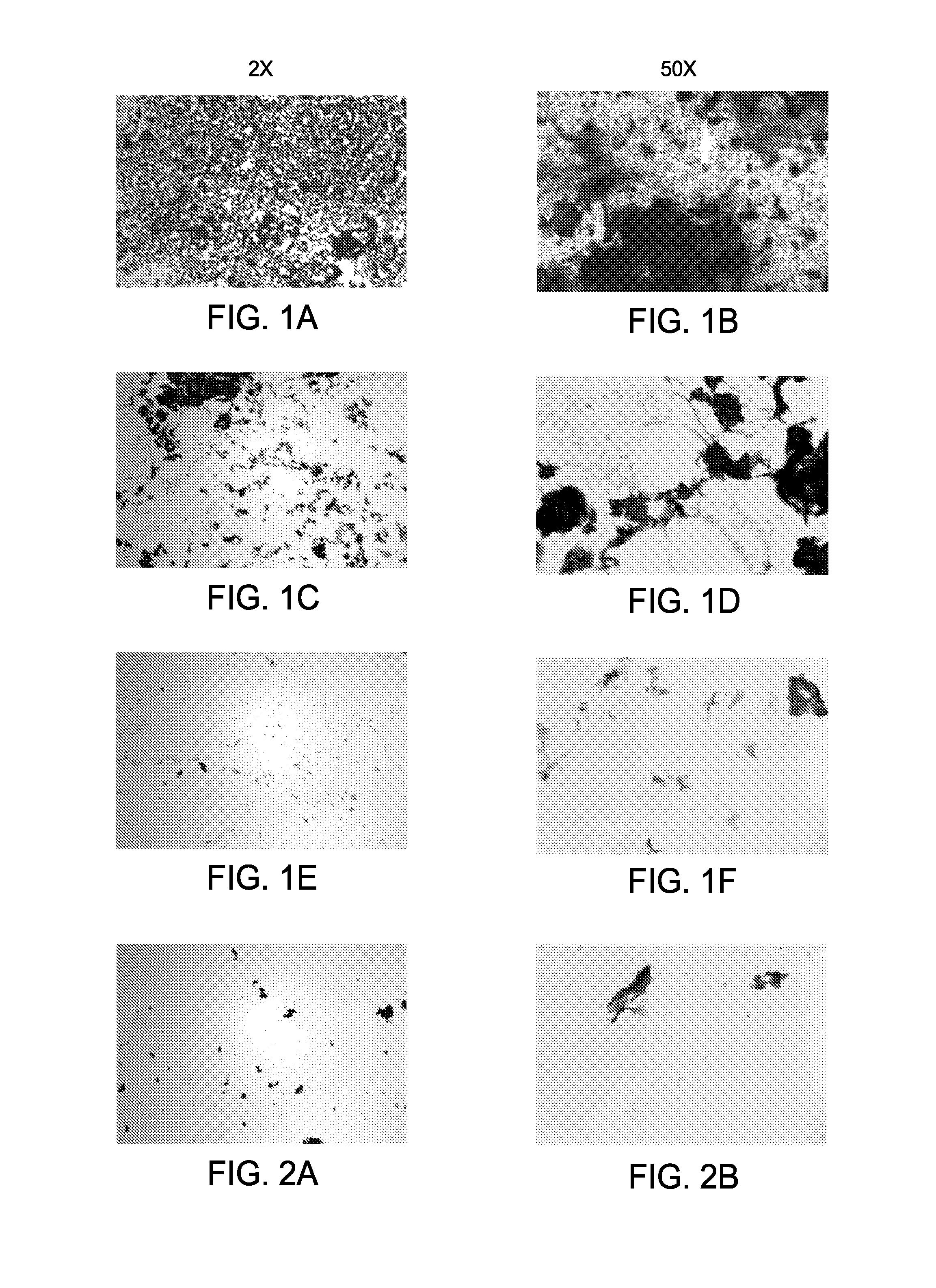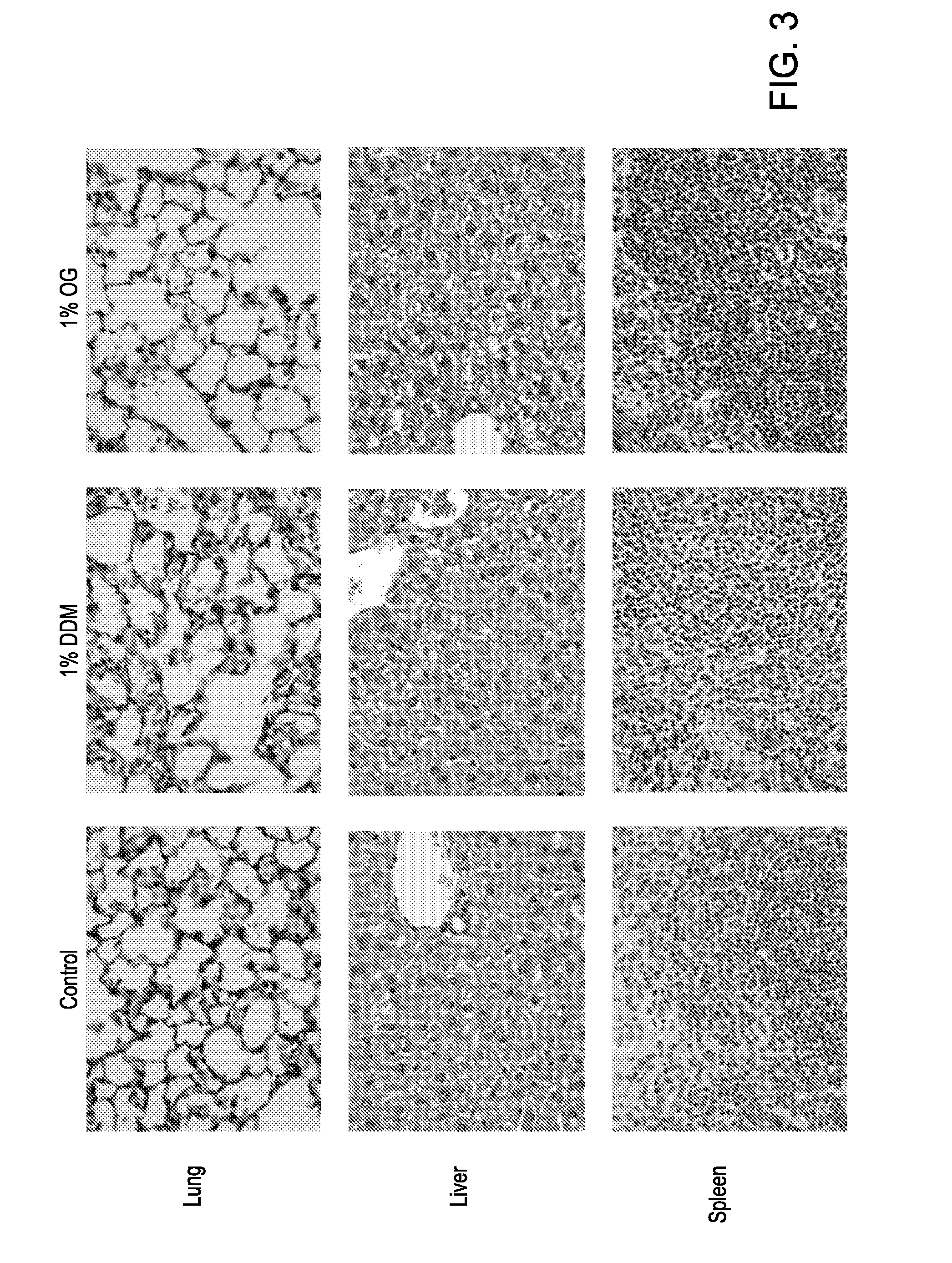Compositions and methods for treating mycobacterial infections
a technology for mycobacterial infections and compositions, applied in the field of medicine, can solve the problems of reduced pathogenic ability of this mycobacterial species, increased risk of infection, and increased risk of infection, and achieves the effects of reducing the pathogenic state of bacteria, reducing the protective coat of mycolic acid, and reducing the pathogenicity of bacteria
- Summary
- Abstract
- Description
- Claims
- Application Information
AI Technical Summary
Benefits of technology
Problems solved by technology
Method used
Image
Examples
example 1
Effects of Surfactants on Corded State of MTB
[0113]In vitro studies described in this example have established that TB bacteria exposed to the disclosed surfactant compositions (at 1% wt / vol. concentration of the active ingredient) for 2 hr showed significant destruction and disappearance of the bacteria documented by phase-contrast microscopy, conventional light microscopy with acid-fast staining and electron microscopy (EM). After 24 hr incubation, the decrease in the corded state was even more pronounced: the high-power view phase contrast microscopy clearly demonstrated strong bactericidal effect of such exposure.
Experimental Protocol
[0114]The inventors have studied the effect of surfactants on the corded state of MTB (FIG. 1). These studies establish proof that the corded state of the bacteria can be reversed. The incubation of the Erdman strain of MTB in PBS growth medium for two weeks results in extensive cording (FIG. 1A). A 50× microscopic field of the cultured bacteria sho...
example 2
Ex Vivo Treatment of Pulmonary TB
[0122]The present example describes ax vivo studies utilizing surgical specimens obtained from patients treated by lobectomy or pulmonectomy for MDR / XDR and MTB cavitary pulmonary TB (“PTB”). This approach provides valuable information concerning active localized PTB, as compared to traditional animal model studies which following systemic (and not localized) infection with the bacterium.
[0123]In this context, it is noteworthy that conventional mammalian disease models do not afford lung cavities that are an essential component in the spread of the human form of the disease. The use of an ex vivo approach permits determination of the details of application and possible pitfalls as compared to conventional approaches in vivo for the treatment of the cavity form of the disease in clinical trials.
[0124]After obtaining a fresh surgical specimen with cavitary TB in tact, a small tissue sample from the cavity is taken through the bronchial opening and exam...
example 3
Toxicology Studies
[0126]Toxicology studies using the anti-mycobacterial compositions were performed in mice, and the results are shown in FIG. 3. The mice, four in each group, were administered an aerosol consisting of 25 μl of saline (control) and OG or DDM (at concentrations of 0.02%, 0.2%, and 1.0%, respectively). Aerosol was introduced by the endotracheal route using a non-invasive pulmonary delivery apparatus as described by Bivas-Benita et al. (2005). Prior to introduction of the aerosol, the mice were anesthetized by the intraperitoneal injection of 200 μl of Avertin. The procedure was repeated after 24 hr and then weekly for 3 weeks. The mice were fed ad libitum, and weighed after each aerosol delivery.
[0127]One week after the regimen was completed; the lungs were removed and fixed with formalin for histological examination. Gross and microscopic changes were compared with the same in control saline-treated mice. Results from these experiments indicated that OG or DDM did no...
PUM
| Property | Measurement | Unit |
|---|---|---|
| Time | aaaaa | aaaaa |
| Time | aaaaa | aaaaa |
| Density | aaaaa | aaaaa |
Abstract
Description
Claims
Application Information
 Login to View More
Login to View More - R&D
- Intellectual Property
- Life Sciences
- Materials
- Tech Scout
- Unparalleled Data Quality
- Higher Quality Content
- 60% Fewer Hallucinations
Browse by: Latest US Patents, China's latest patents, Technical Efficacy Thesaurus, Application Domain, Technology Topic, Popular Technical Reports.
© 2025 PatSnap. All rights reserved.Legal|Privacy policy|Modern Slavery Act Transparency Statement|Sitemap|About US| Contact US: help@patsnap.com


